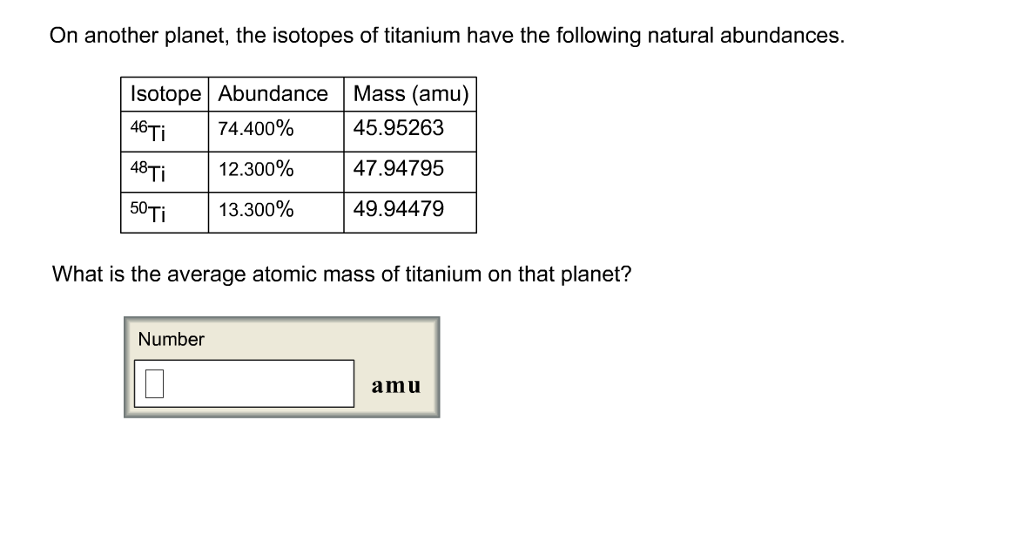


#Average atomic mass of titanium free#
As energy spectrum of flattened and unflattened x-ray beam varies each other and varies in its field itself, the mean free path varies in high Z materials too where this may occur in the treatment field. As effective atomic number and electron densities are dependent on energy of incident x-ray beams, it is important to study the impact of varied energy spectrum of flattened and unflattened x-ray beams on these parameters in megavoltage region (Compton region). The effective atomic number and electron density are convenient parameters used for better understanding of the interaction of radiation with the target material and accurately estimate the absorbed dose. The cross-section, expressed in terms of barns (10 -24 cm), is the effective “area of interaction” per absorber at energy (E) or wavelength (λ) of flattened and unflattened x-ray beams (Hine, 1952). A slower projectile (low energy) spends more time in the proximity of the target hence, it has a higher probability of interaction. The cross-section is not the probability of interaction, but the probability of interaction is proportional to the cross-section.
#Average atomic mass of titanium mac#
MAC is widely used in the calculation of photon penetration and energy deposition in biological shielding and other dosimetric materials (Kiran Kumar et al., 1997).įor a given composite material absorber (High Z implants), an interaction cross-section (σ) varies as a function of wavelength or energy of flattened and unflattened megavoltage x-ray beams. MAC is a measure of probability of interaction that occurs between incident photons and unit per mass area of matter. Hence, it is important to address the variation in behavior of fundamental parameters when x-ray beams of different mean energies interacting with high Z composite materials or alloys in flattened and unflattened megavolt x-ray beams (Koc et al., 2000).įundamental parameters like mass attenuation coefficient (MAC), mean energy, total atomic (σ a) and electronic (σ e) cross-sections, effective atomic number (Z eff), effective electron density (N e), and photon mean free path (mfp) are used to study the interaction of photon with matter. The conflict between high Z implant material and flattened, unflattened x-ray beams are often observed this conflict degrades the dose distribution (Chester et al., 2003 Papinakolaou et al., 2004) as these implanted high Z materials have different interaction properties than other low Z materials such as tissue, lungs, cartilages and bone. Those are alloys with a high atomic number that are hard-wearing and bio-compatible.

In radiation therapy, incident of composite materials (Implant material) like hip prosthesis, vertebral reconstruction, and tooth implants are high. Therefore, the mean energy at isocenter and off-axis varies considerably between unflattened and flattened beam. With the introduction of unflattened x-ray beams in cancer treatment, the energy spectrum changes drastically with the removal of flattening filter from x-ray beam path (Cashmore et al., 2008 Goerg et al., 2011 Kargl et al., 2009).


 0 kommentar(er)
0 kommentar(er)
